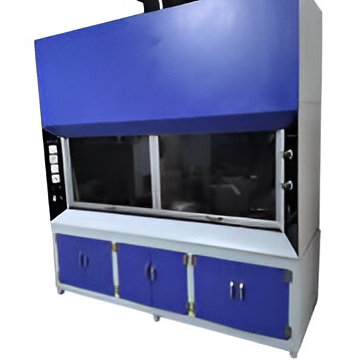Custom Fume Hood
Creating a custom fume hood involves several key considerations to ensure it meets your specific needs and safety standards. Here are the steps and factors to consider when designing and building a custom fume hood:
1. Determine the Purpose
- Type of Chemicals: Identify the types of chemicals you will be using to determine the necessary ventilation and materials.
- Type of Work: Consider the nature of the work (e.g., lab experiments, industrial processes) to guide the design.
2. Design Specifications
- Size: Determine the dimensions based on the available space and the amount of equipment or materials you need to fit inside.
- Materials: Choose materials that are resistant to the chemicals you will be using. Common materials include stainless steel, PVC, and glass.
- Airflow: Design the airflow system to ensure proper ventilation. This includes the placement of fans, ducts, and filters.
3. Ventilation System
- Exhaust Fan: Select an appropriate exhaust fan to ensure sufficient airflow and removal of fumes.
- Ductwork: Plan the ductwork layout to minimize resistance and ensure efficient airflow.
- Filters: Choose the right filters (HEPA, carbon) based on the types of fumes and particles generated.
4. Safety Features
- Sash: Incorporate a sash (sliding glass panel) that can be adjusted to control airflow and provide a physical barrier.
- Alarms: Install airflow monitors and alarms to alert users if ventilation fails.
- Lighting: Ensure adequate lighting inside the hood for visibility during operations.
5. Compliance and Standards
- Regulations: Ensure the design complies with local, state, and national regulations (e.g., OSHA, ANSI).
- Testing: Plan for regular testing and maintenance to ensure the hood continues to function properly.
6. Construction and Installation
- Professional Help: Consider hiring professionals for the construction and installation to ensure safety and compliance.
- Modular Design: If possible, design the fume hood in a modular fashion for easy maintenance and upgrades.
7. Maintenance
- Regular Checks: Schedule regular inspections and maintenance to keep the fume hood in optimal working condition.
- Replacement Parts: Keep a stock of essential replacement parts like filters and fans.
Example Design Process:
- Initial Assessment: Evaluate the lab space and define the specific requirements based on the types of experiments conducted.
- Conceptual Design: Sketch a basic design, including dimensions, airflow paths, and placement of equipment.
- Detailed Design: Create detailed blueprints and specifications, including material choices and safety features.
- Construction: Build the fume hood, ensuring all components are properly installed and connected.
- Testing and Certification: Test the fume hood to ensure it meets all safety and performance standards, and obtain necessary certifications.

